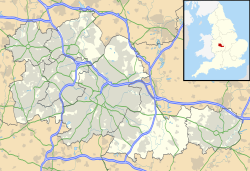
ThrustSSC, Thrust SSC or Thrust SuperSonic Car is a British jet car developed by Richard Noble, Glynne Bowsher, Ron Ayers, and Jeremy Bliss. Thrust SSC holds the world land speed record, set on 15 October 1997, and driven by Andy Green, when it achieved a speed of 1,228 km/h (763 mph) and it became the first and only land vehicle to officially break the sound barrier.
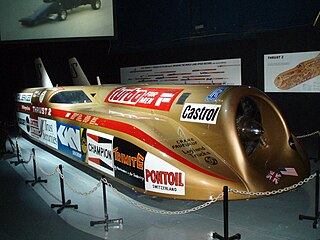
Thrust2 is a British-designed and -built jet-propelled car, which held the world land speed record from 4 October 1983 to 25 September 1997.

The automotive industry in the United Kingdom is now best known for premium and sports car marques including: Aston Martin, McLaren, Bentley, Rolls-Royce, Jaguar, Range Rover, Mini and Lotus. Specialised sports car companies include: Ariel, BAC, Morgan, Caterham, AC Cars, Gordan Murray, TVR, Noble, Radical, Ginetta, Ultima Sports, Westfield, Lister, Arash and David Brown. Volume car manufacturers with a major presence in the UK include: Nissan, Toyota, Mini and Vauxhall. Commercial vehicle manufacturers active in the UK include Alexander Dennis, Dennis Eagle, IBC Vehicles, Leyland Trucks, TEVVA and the London Electric Vehicle Company.

The Rover Company Limited was a British car manufacturing company originally founded in 1878, beginning car manufacturing in 1904. It primarily operated from its base in Solihull, Warwickshire. Rover also manufactured the Land Rover series from 1948 onwards, and created the Range Rover in 1970, which went on to become its most successful and profitable product. Land Rover eventually became a separate company and brand in its own right.

British Leyland was a British automotive engineering and manufacturing conglomerate formed in 1968 as British Leyland Motor Corporation Ltd (BLMC), following the merger of Leyland Motors and British Motor Holdings. It was partly nationalised in 1975, when the UK government created a holding company called British Leyland, later renamed BL in 1978. It incorporated much of the British-owned motor vehicle industry, which in 1968 had a 40% share of the UK car market, with its history going back to 1895. Despite containing profitable marques such as Jaguar, Rover, and Land Rover, as well as the best-selling Mini, BLMC had a troubled history, leading to its eventual collapse in 1975 and subsequent part-nationalisation.

The Rootes Group was a British automobile manufacturer and, separately, a major motor distributors and dealers business. From headquarters in the West End of London, the manufacturer was based in the Midlands and the distribution and dealers business in the south of England. In the decade beginning 1928 the Rootes brothers, William and Reginald, made prosperous by their very successful distribution and servicing business, were keen to enter manufacturing for closer control of the products they were selling.
Hillman was a British automobile marque created by the Hillman-Coatalen Company, founded in 1907, renamed the Hillman Motor Car Company in 1910. The company was based in Ryton-on-Dunsmore, near Coventry, England. Before 1907 the company had built bicycles. Newly under the control of the Rootes brothers, the Hillman company was acquired by Humber in 1928. Hillman was used as the small car marque of Humber Limited from 1931, but until 1937 Hillman did continue to sell large cars. The Rootes brothers reached a sixty per cent holding of Humber in 1932 which they retained until 1967, when Chrysler bought Rootes and bought out the other forty per cent of shareholders in Humber. The marque continued to be used under Chrysler until 1976.
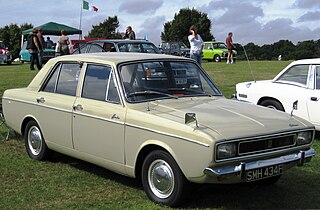
Rootes Arrow was the manufacturer's name for a range of cars produced under several badge-engineered marques by the Rootes Group from 1966 to 1979 in Europe, and continuing on until 2005 in Iran. It is amongst the last Rootes designs, developed with no influence from future owner Chrysler. The range is almost always referred to by the name of the most prolific model, the Hillman Hunter.
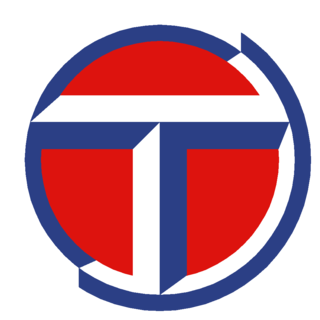
Talbot is a dormant automobile marque introduced in 1902 by British-French company Clément-Talbot. The founders, Charles Chetwynd-Talbot, 20th Earl of Shrewsbury and Adolphe Clément-Bayard, reduced their financial interests in their Clément-Talbot business during the First World War.

The Talbot Horizon is a compact hatchback designed by Chrysler Europe and produced from 1978 to 1987. It was sold under the Simca, Chrysler and Talbot nameplates. The successor to both the Simca 1100 and Hillman Avenger, the Horizon adopted a front-wheel drive, transverse-engine layout.

The Talbot Tagora is an executive car developed by Chrysler Europe and produced by Peugeot Société Anonyme (PSA). The Tagora was marketed under the Talbot marque after PSA took over Chrysler's European operations in 1979. PSA presented the first production vehicle in 1980 and launched it commercially in 1981. The Tagora fell short of sales expectations, described as a "showroom flop" just a year after its launch, and PSA cancelled the model two years later. Fewer than 20,000 Tagora models were built, all of them at the former Simca factory in Poissy, near Paris, France.

Chrysler Europe was the American automotive company Chrysler's operations in Europe from 1967 through 1978. It was formed from the merger of the French Simca, British Rootes and Spanish Barreiros companies. In 1978, Chrysler divested these operations to PSA Peugeot Citroën.
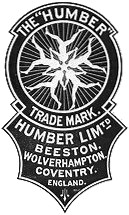
Humber Limited was a British manufacturer of bicycles, motorcycles, and cars, incorporated and listed on the stock exchange in 1887. It took the name "Humber & Co Limited" because of the high reputation of the products of one of the constituent businesses that had belonged to Thomas Humber. A financial reconstruction in 1899 transferred its business to Humber Limited.

The British Motor Museum in Gaydon, Warwickshire, England holds the world's largest collection of historic British cars, with over 300 cars on display from the British Motor Industry Heritage Trust and the Jaguar Heritage Trust.
Carbodies was a taxi design and manufacturing company based in Coventry, England. In its latter years it also traded as London Taxis International and The London Taxi Company.

Herbert Art Gallery & Museum is a museum, art gallery, records archive, learning centre, media studio and creative arts facility on Jordan Well, Coventry, England.
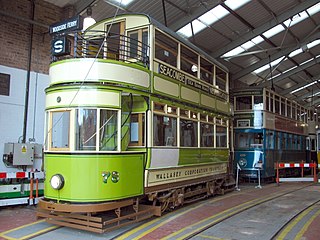
Wirral Transport Museum is a museum situated approximately 0.5 miles (800 m) from the Mersey Ferry service at Woodside, Birkenhead, England.
The British Motorcycle Charitable Trust (BMCT) is a charitable incorporated organisation dedicated to promoting and supporting the preservation and restoration of British motorcycle engineering heritage. Established as a Registered Charity in 1979, the Trust aims to protect and restore rare British motorcycles and provide access to the public through a network of museums and annual motorcycle heritage events. The Trust also provides support and resources to educational establishments, clubs and private individuals and maintains information on all aspects of British motorcycles.

James Hall Museum of Transport is a transport museum that aims to preserve and promote the history of over 400 years of transport in South Africa in particular, and Africa in general. It is the largest transport museum in Africa. It is located at Pioneers' Park beside the Wemmer Pan in La Rochelle, Johannesburg, South Africa. It was established in 1964 by Jimmie Hall and the City of Johannesburg.
France was a pioneer in the automotive industry and is the 11th-largest automobile manufacturer in the world by 2015 unit production and the third-largest in Europe. It had consistently been the 4th-largest from the end of World War II up to 2000. It is 16% of sales of French manufactured products.

